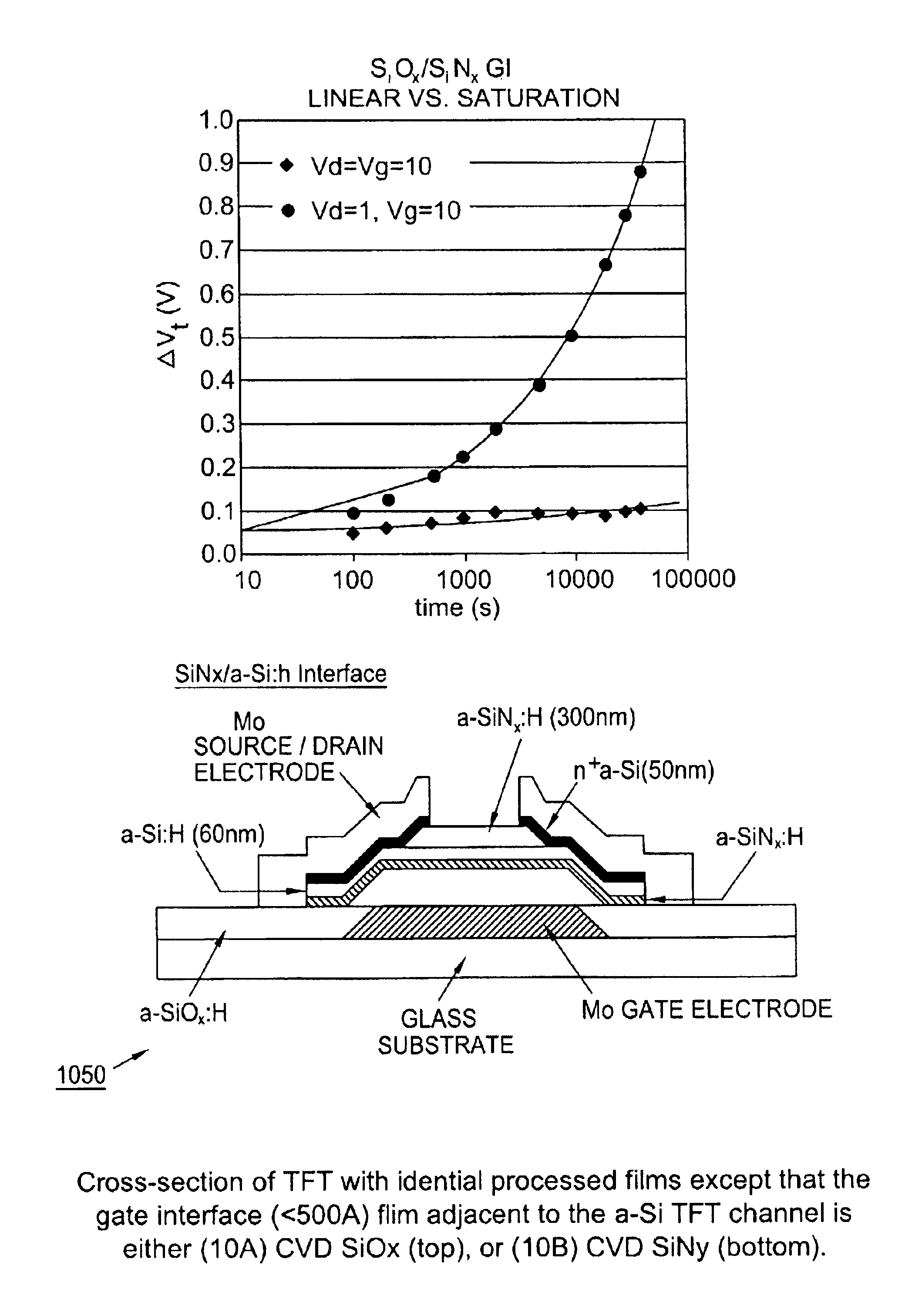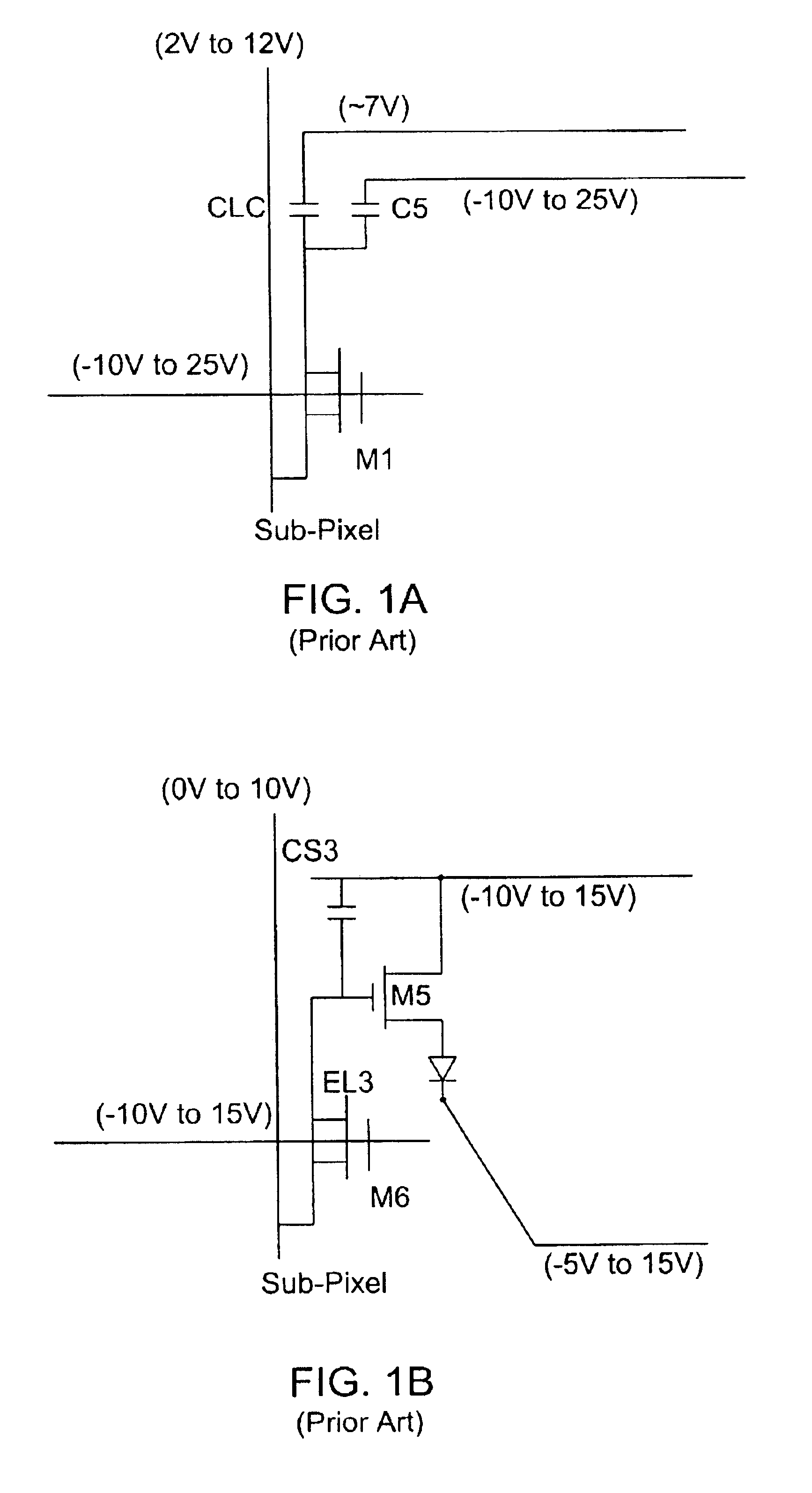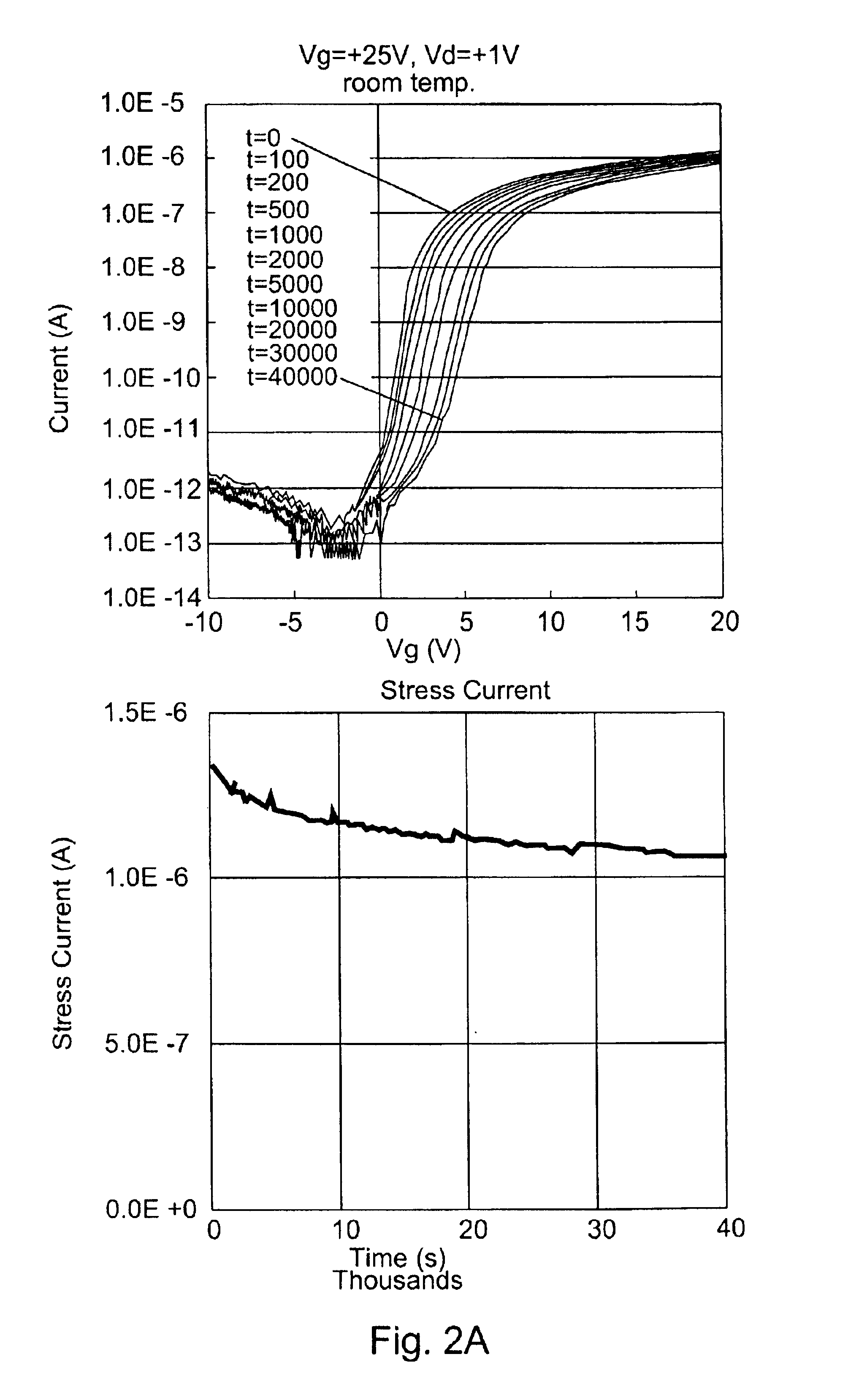Low threshold voltage instability amorphous silicon field effect transistor structure and biasing for active matrix organic light-emitting diodes
a technology of amorphous silicon field effect transistor and pixel capacitance, which is applied in the direction of static indicating devices, identification means, instruments, etc., can solve the problem of increasing the charging time of pixel capacitance, and achieve the effect of reducing the threshold voltage instability with time and not degrading the performance of the devi
- Summary
- Abstract
- Description
- Claims
- Application Information
AI Technical Summary
Benefits of technology
Problems solved by technology
Method used
Image
Examples
Embodiment Construction
As a point of introduction, consider FIGS. 2A and 2B below. Both show threshold shift and drive current results for geometrically identical, neighboring TFTs from the same substrate, but in two quite different modes of operation. FIG. 2A shows the first TFT in the linear regime of operation with Vg=+25 V, and Vd=+1V (the source is grounded). FIG. 2B shows the neighboring TFT in the saturation regime with Vg=Vd=+10 V. Note that these voltages yield fairly similar drive currents, starting at approximately 1.40 μA for the TFT of FIG. 2a, and approximately 1.55 μA for the TFT in FIG. 2b. It is readily apparent that these conditions lead to dramatically different threshold stability in the nominally identical devices, namely, after 40,000 seconds of continuous (DC) stress at room temperature, the threshold shift (ΔVT) of the first TFT is approximately 4.0 V, while that of the second TFT is only approximately 0.25 V. It is clear that there are ranges of voltage which are clearly more suit...
PUM
 Login to View More
Login to View More Abstract
Description
Claims
Application Information
 Login to View More
Login to View More - R&D
- Intellectual Property
- Life Sciences
- Materials
- Tech Scout
- Unparalleled Data Quality
- Higher Quality Content
- 60% Fewer Hallucinations
Browse by: Latest US Patents, China's latest patents, Technical Efficacy Thesaurus, Application Domain, Technology Topic, Popular Technical Reports.
© 2025 PatSnap. All rights reserved.Legal|Privacy policy|Modern Slavery Act Transparency Statement|Sitemap|About US| Contact US: help@patsnap.com



